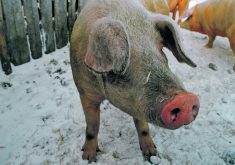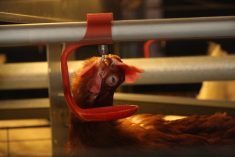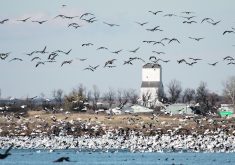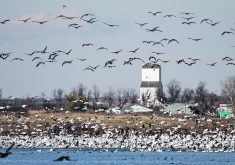The Prairies are once again taking the brunt of the impacts of avian influenza this fall after being hit with the full force of the highly pathogenic version of the virus in the spring.
Manitoba was largely spared from the worst effects earlier this year, but autumn hasn’t been so kind when it comes to the bird flu in the Keystone province.
One commercial operation near the Ontario border along the Trans-Canada Highway had quarantine protocols put in place in April while two small flocks were also impacted in June.
Read Also

Manitoba extends Crown land rent freeze
Manitoba government links the continued rental rate freeze on grazing and forage leases to economic and environmental challenges facing the industry
This fall has seen nine commercial poultry operations hit with positive cases of avian influenza in Manitoba in less than a month.
The situation has chicken farmers like Ryan Plett, who owns Heritage Lane Farms, anxious about the impacts of the bird flu with several cases hitting operations near his southeastern Manitoba business.
“Within days of the geese being here we started having our first cases,” said Plett, highlighting the spread of this year’s outbreak coming with the spring and fall wild bird migrations.
Heritage Lane Farms offers direct marketing of its roaster chickens. The family-run business is small enough to operate outside the main supply management system through a specialty quota.
But the proximity of his operation to one that has a positive case has him scrambling to find somewhere to place his chicks.
“That has been a whirlwind of trying to find somewhere to have our birds because the eggs were in place and were hatching within five days, so we needed to move fast and find a home for them so that our marketing is not going be affected without actually being an infected flock,” said Plett.
The timing of the outbreak is also a large concern for his operation and others in the region, coming on the eve of the Thanksgiving rush.
“What’s been hardest hit in our area are the turkey farms,” he said. “I don’t know what kind of shortage — were there enough turkeys already ready for Thanksgiving?”
The expectation is there will be a shortage for both Canadian Thanksgiving this month and the U.S. holiday in November because American producers are also dealing with this year’s bird flu.
Christmas orders may also be impacted if the virus continues, speculated Plett.
Biosecurity measures are working in favour of poultry producers because there has been little, if any, farm-to-farm transmission of the virus.
According to Plett, organizations like the Manitoba Chicken Producers have been an invaluable resource as well.
Meanwhile, in Alberta 15 commercial operations have reported cases between the last week of August through September.
Saskatchewan has seen five commercial poultry operations with confirmed outbreaks this September after seeing a half dozen commercial operations hit in April and May.
British Columbia has had one commercial operation hit in September with Ontario and Quebec seeing little in the way of major impacts this fall so far.
















